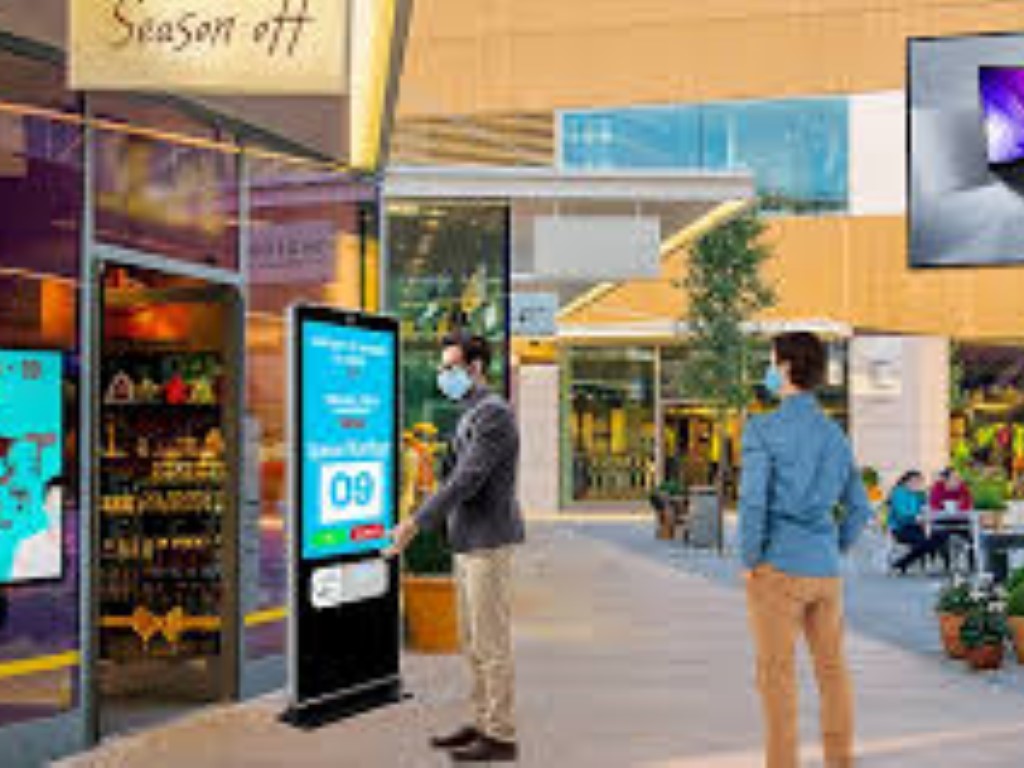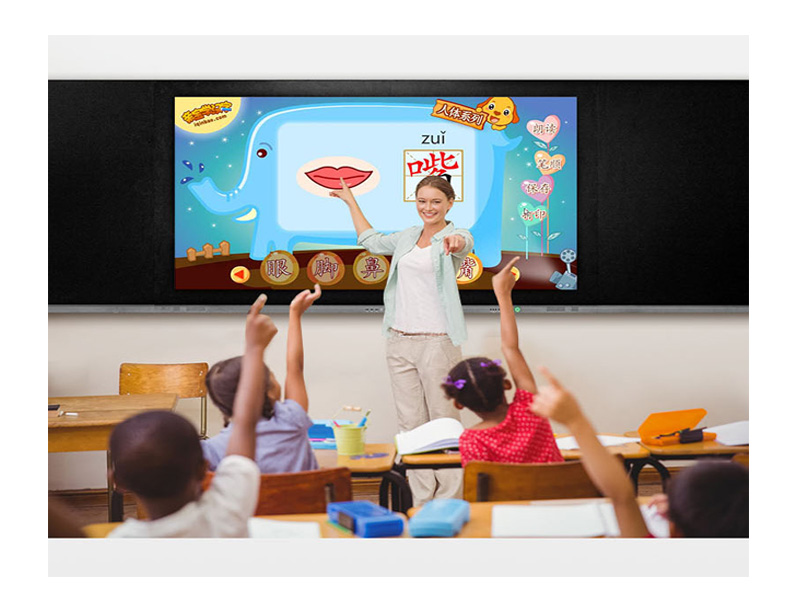
In today’s business landscape, companies face a constantly evolving landscape of challenges and opportunities that demands effective communication with their employees. To succeed, businesses must find ways to educate and engage their workforce on a range of business strategy topics that are critical to their success.
Digital signage software has emerged as a powerful tool for internal communication, allowing companies to share information in real-time, in a visually compelling way. In this blog post, we’ll explore how businesses can use digital signage to communicate key strategic messages to their employees. We’ll also provide tips and best practices for maximizing the impact of digital signage in communicating with employees and driving business success.
Tips for communicating business strategy
Digital signage can be an effective way for organizations to communicate top-level business strategies to their employees. Here are some tips on how to use digital signage to educate and inform employees with maximum impact:
Make it visual: One of the key advantages of digital signage is that it allows for dynamic, visually engaging content. Use images, videos and real-time data visualizations to help employees better understand the company’s strategies.
Keep it simple: Top-level strategies can be complex, but it’s important to distill them down into simple, easy-to-understand messages. Use plain language and avoid technical jargon to ensure that employees can easily and quickly grasp the key concepts.
Reinforce the message: Don’t rely on a single message to communicate a business strategy. Instead, use digital signage campaigns to reinforce the message over time, using different visuals and messaging to keep employees engaged and interested.
Provide context: Help employees understand how business strategies fit into the broader context of the industry and the marketplace. This will help them better appreciate the importance of these strategies and their role in achieving them.
Use real-life examples: Use real-life examples to illustrate how each strategy has been successful in the past, or how it is being implemented in the present. This can help employees better understand the practical implications of your plans.
Encourage feedback: Digital signage can encourage two-way communication, prompting employees to provide feedback on company strategies. Encourage employees to share their thoughts and ideas, and use their feedback to refine and improve the messaging over time.
By following these tips, organizations can use digital signage to educate employees about top-level strategies in a clear, engaging and effective way. By ensuring that employees understand and appreciate the company’s strategic goals, businesses can help create a more aligned, motivated and productive workforce.

Examples of Business Strategy Communications
Digital signage is a versatile tool that can be used to address a variety of employee communication topics. It is an effective way to share information, promote company culture and engage employees. The following are just a few examples of business strategy topics you can share on screens.
Leadership and management
Leadership and management are critical components of any successful organization. However, many employees may not have a clear understanding of who their company’s leaders are, or what their management philosophy is. Here are some ways in which digital signage can be used to share information about leadership and management:
Highlight leaders: Use digital signage to showcase the company’s leaders, including their background, experience and areas of expertise. This can help employees feel more connected to their leaders and understand their vision for the company.
Share values and mission: Share the company’s values and mission statement, and how these guide the company’s leadership and management practices. This can help employees understand the culture of the company and their role in achieving the company’s goals.
Provide leadership training: Promote leadership training opportunities for employees, including workshops, mentorship programs and coaching. This can help develop leadership skills at all levels of the organization and create a culture of continuous learning.
Share management best practices: Share best practices for management, including effective communication, delegation, performance management and conflict resolution. This can help employees understand what is expected of them as managers and improve their effectiveness in these roles.
By using digital signs to share information about leadership and management, businesses can help employees understand the company’s values, mission and goals, as well as their own role in achieving these. By highlighting leaders, providing leadership training and sharing best practices, businesses can help create a culture of engagement, continuous learning and recognition.

Change and transformation
In today’s rapidly changing business environment, it’s essential for companies to be able to communicate effectively about upcoming changes and transformation initiatives. Digital signage can be a powerful tool for sharing this information in a way that is both timely and engaging.
Announce the change: Make a clear announcement about the upcoming change or transformation. This can include the reasons behind the change, the timeline for implementation and the expected outcomes. Be sure to show reminders leading up to the change.
Provide context: Provide the background and reasoning for the change or transformation, including how it fits into the company’s overall strategy and vision. This can help employees understand the bigger picture and the importance of the change.
Address concerns: Directly address any concerns that employees may have about the change or transformation. This can include answers to FAQs or issues that have been raised, and reassurance that the company is committed to making the transition as smooth as possible.
Provide updates: Show regular updates on the progress of the change or transformation, and any adjustments that are being made. This can help employees feel more engaged and informed throughout the process.
Encourage feedback: Use digital signage to encourage feedback from employees on the change or transformation, including any challenges or opportunities for improvement. This can help foster a culture of continuous improvement and engagement.
By following these tips, businesses can use digital signage to effectively communicate about change and transformation to their employees and help create a more engaged and informed workforce during times of change.
Sustainability and social responsibility
With growing awareness and concern about issues such as climate change and social inequality, many companies are seeking to demonstrate their commitment to these issues through concrete actions and initiatives. Digital signage can be a powerful tool for sharing information about these efforts in a way that is both informative and inspiring.
Highlight the company’s values: Use digital signage to showcase the company’s commitment to sustainability and social responsibility, and to emphasize the importance of these values in the workplace. Be sure to give concrete examples.
Provide education: Educate employees about sustainable practices and the impact of the company’s actions on the environment and society. This can include tips on recycling, and reducing energy consumption and waste.
Share success stories: Showcase the company’s successes in sustainability and social responsibility, such as reducing carbon emissions, using renewable energy or supporting local charities. This can help build employee pride and encourage continued efforts in these areas.
Encourage participation: Encourage employees to participate in sustainability and social responsibility efforts, such as volunteering, recycling or reducing waste. Provide clear instructions on how to get involved and highlight the impact that individual actions can have.
Promote transparency: Encourage transparency around the company’s sustainability and social responsibility practices, including any challenges or areas for improvement. This can help build trust and encourage employees to engage in constructive dialogue around these issues.
Provide resources: Guide employees to tools they can use to learn more about sustainability and social responsibility, such as links to relevant websites or information about training programs. This can help employees develop a deeper understanding of these issues and take meaningful action.
By following these tips, businesses can help create a more engaged, more environmentally and socially responsible workforce.
The future of work
The future of work is rapidly changing, and new workplace technologies are emerging all the time. Organizations can use digital signage to educate employees about these changes and how they will impact the company.
Highlight the benefits: When introducing new workplace technologies or changes to the way work is done, it’s important to focus on the benefits. Highlight how these changes will make work easier, more efficient and more enjoyable.
Address concerns: While it’s important to highlight the benefits of new workplace technologies, it’s also important to address any concerns that employees may have. Use digital signs to answer common questions and provide reassurance that the company is committed to making new technologies work for their employees and not the other way around.
Cite examples: Show real-life examples, case studies and testimonials about how new workplace technologies are being used in other companies or industries. This can help employees better understand the practical implications of these technologies and how they can be used to improve their own work.
Provide training: When introducing new workplace technologies, it’s important to provide adequate training to ensure that employees are comfortable using them. Use digital signage to provide information about training sessions and to encourage employees to attend. Use countdowns on screens to encourage early registration.
Foster collaboration: Many new workplace technologies are designed to foster collaboration and teamwork. Use digital signage to encourage employees to use these technologies to work together and share ideas. You can also show reservations and schedules and collaboration spaces to let everyone know where and when they can get together.
By following these tips, executives can help employees adapt and evolve as the future of work changes, and help create a more engaged, productive and innovative workforce.
Whatever business strategy you communicate on digital signs, be sure to celebrate successes. Whether it’s achievements of leaders and managers, the success of a change or transformation, or new workplace technologies being successfully implemented, recognize the efforts of employees who have been involved. This can help build a culture of recognition and motivation, and build momentum and enthusiasm for future changes.
Whether you’re a small business or a large corporation, there are many ways that carefully crafted visual content can help your organization better communicate top-level strategies to employees. With its ability to convey complex information in a simple and engaging way, digital signage can help you foster a culture of continuous learning and improvement, build employee morale and motivation, and drive business success.
Related Articles:
What is digital signage hardware and software?
How to Use Cloud-Based Digital Signage to Boost Your Retail Sales
What is Digital Signage? | The Most Accurate Definition






